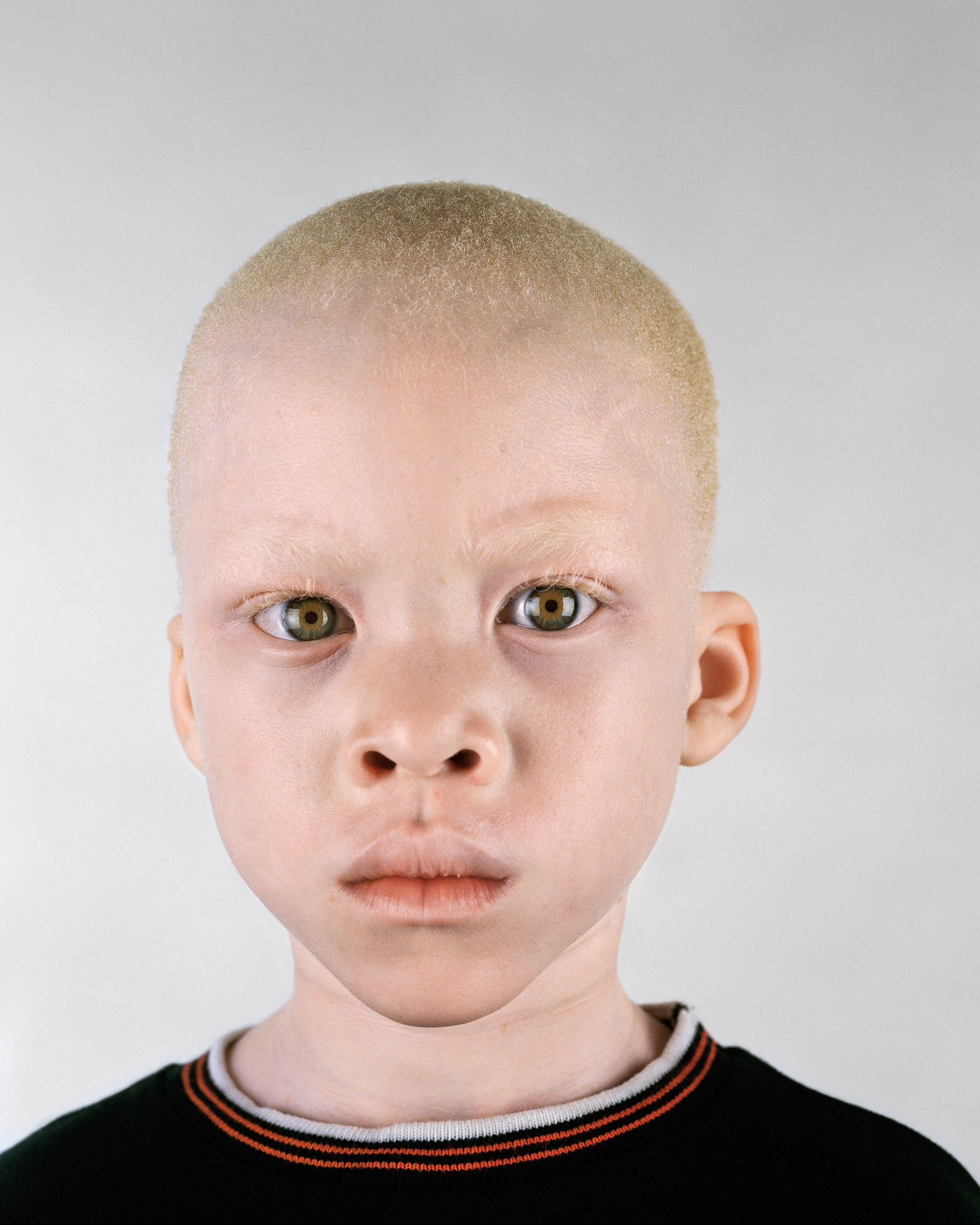
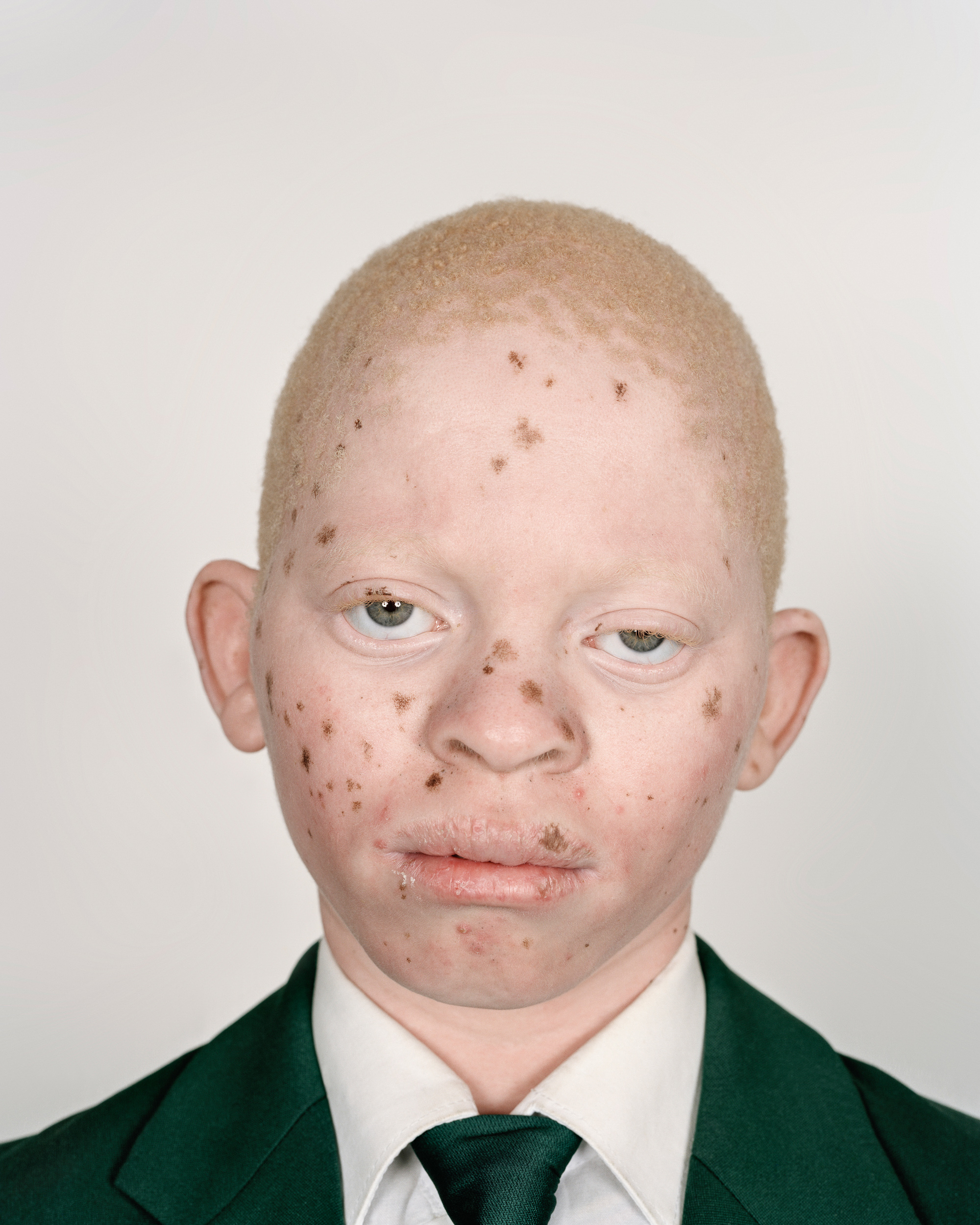
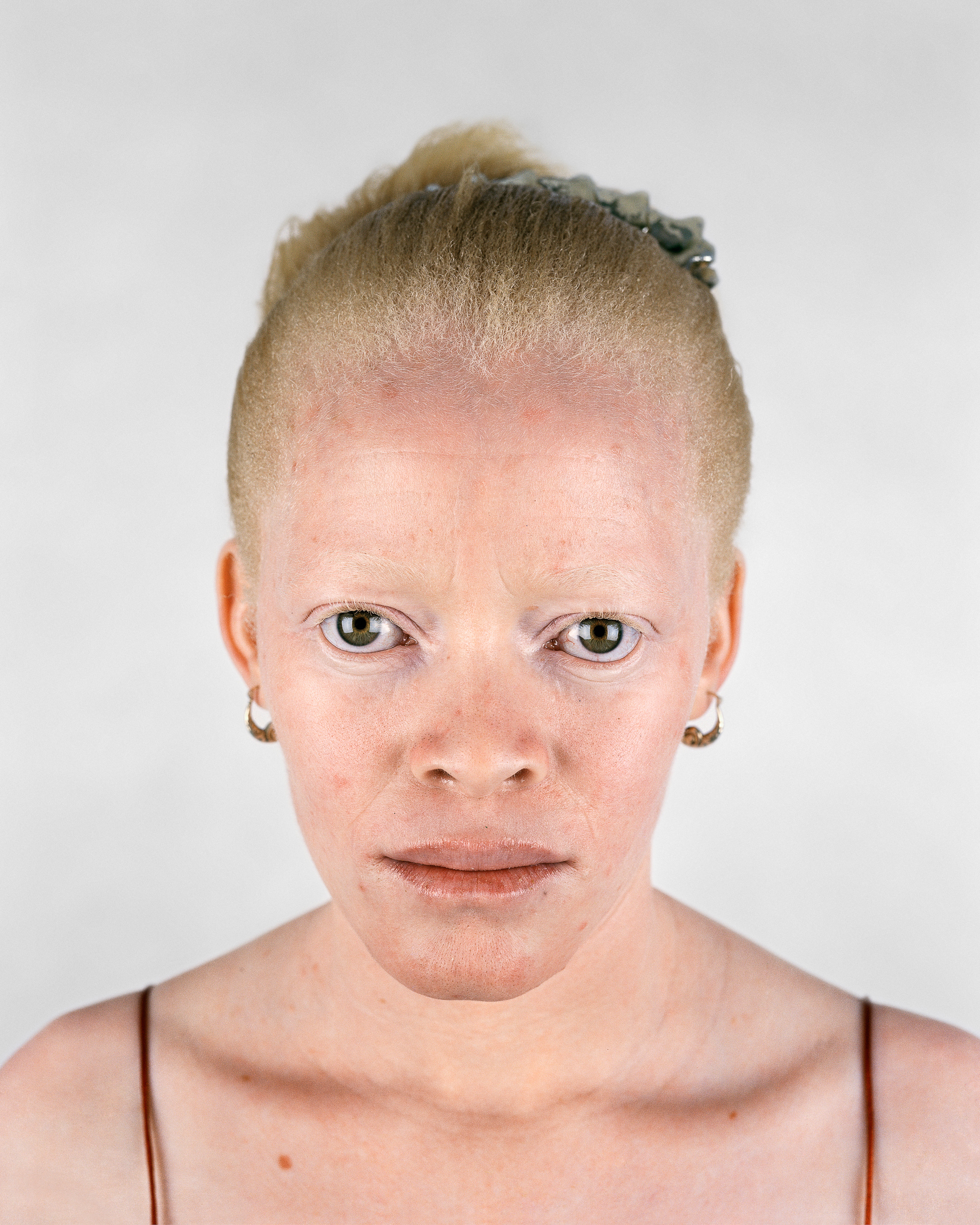

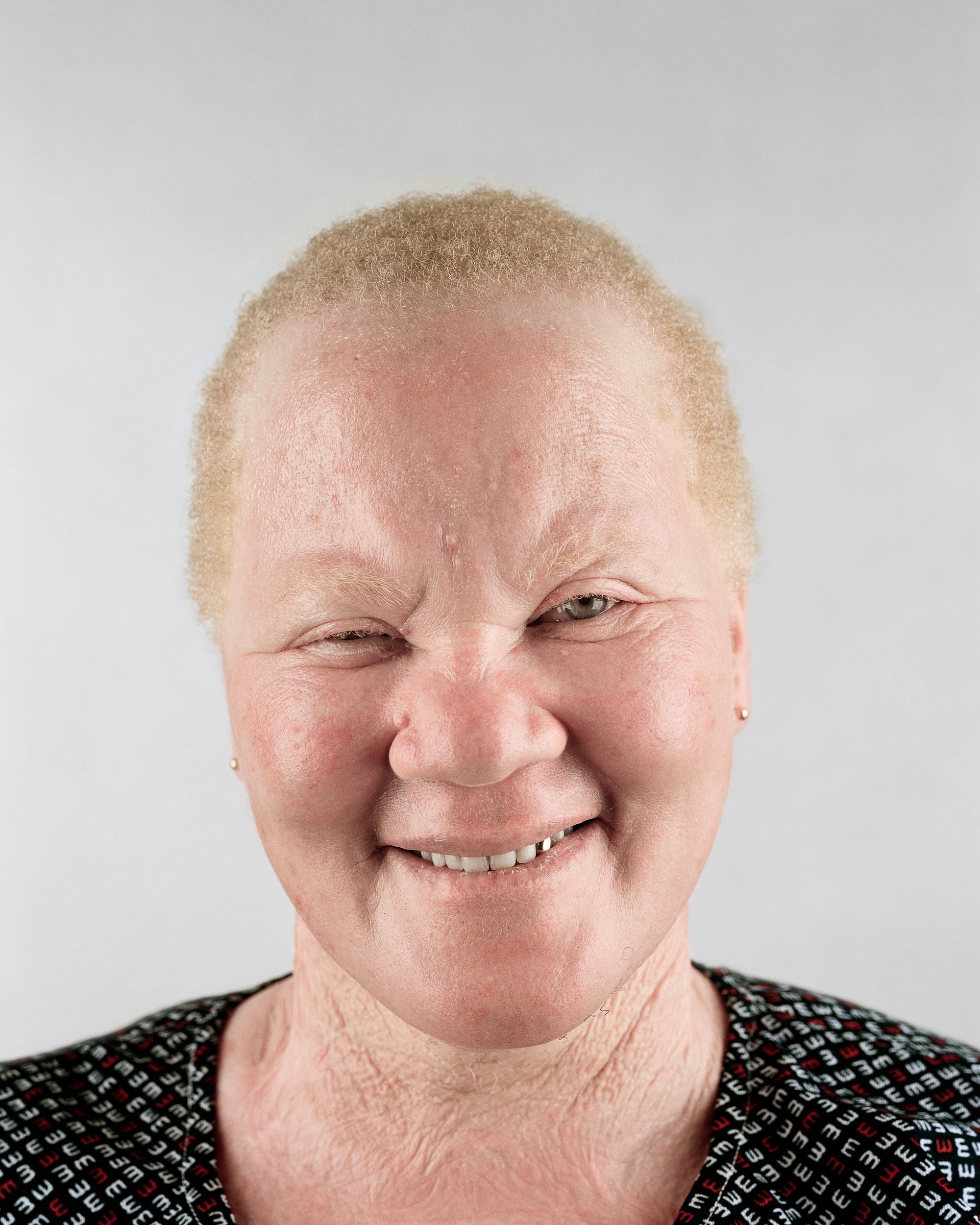
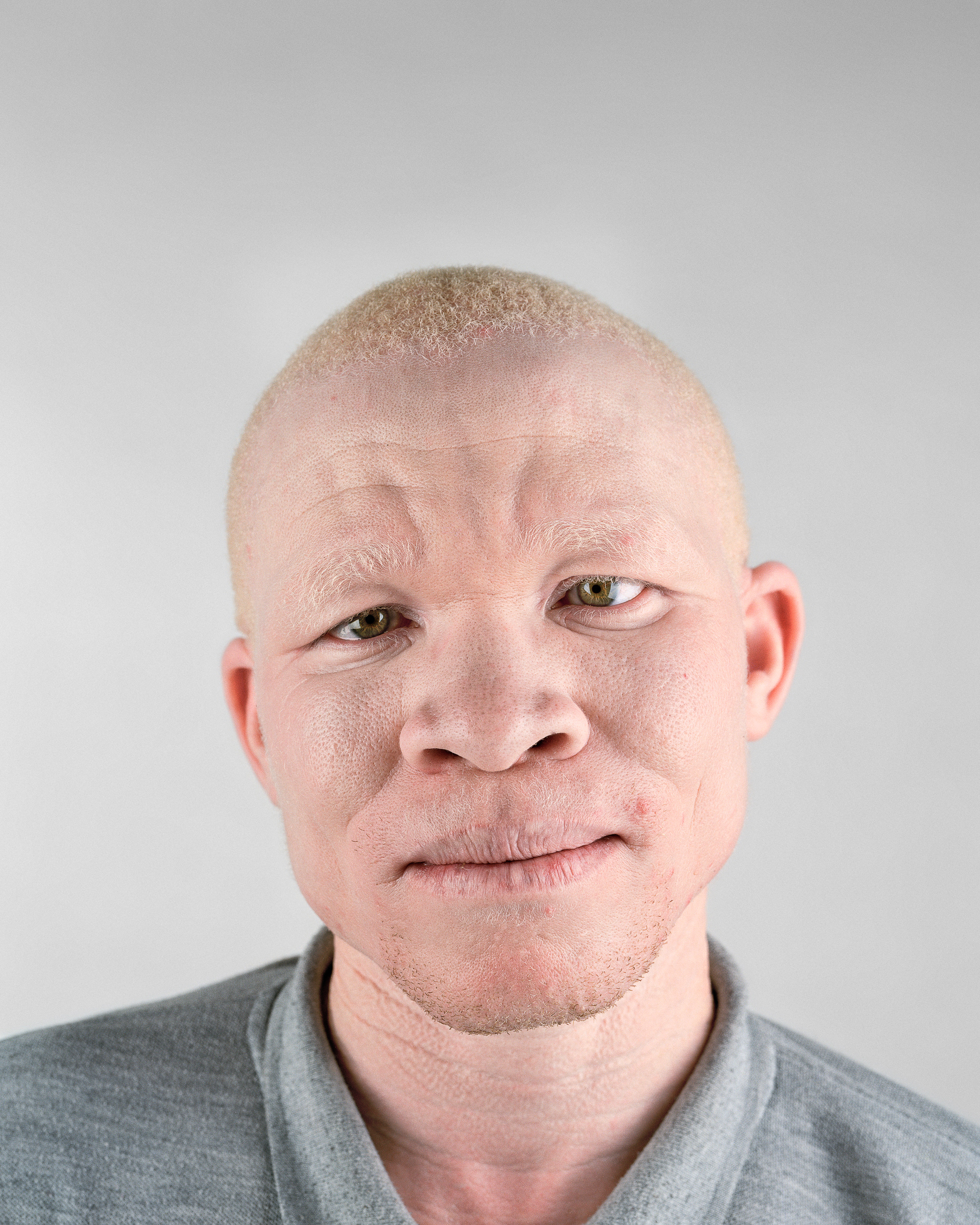
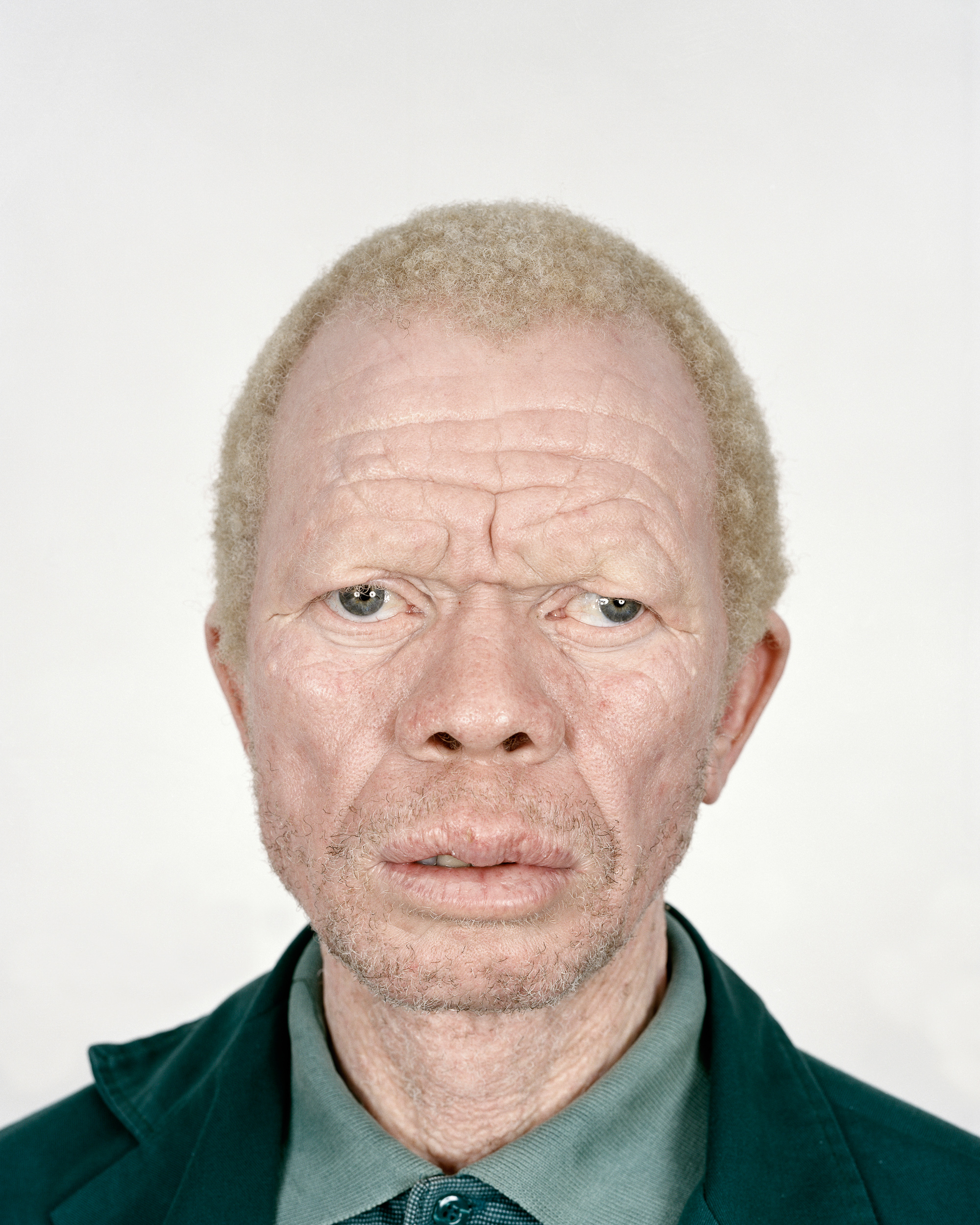
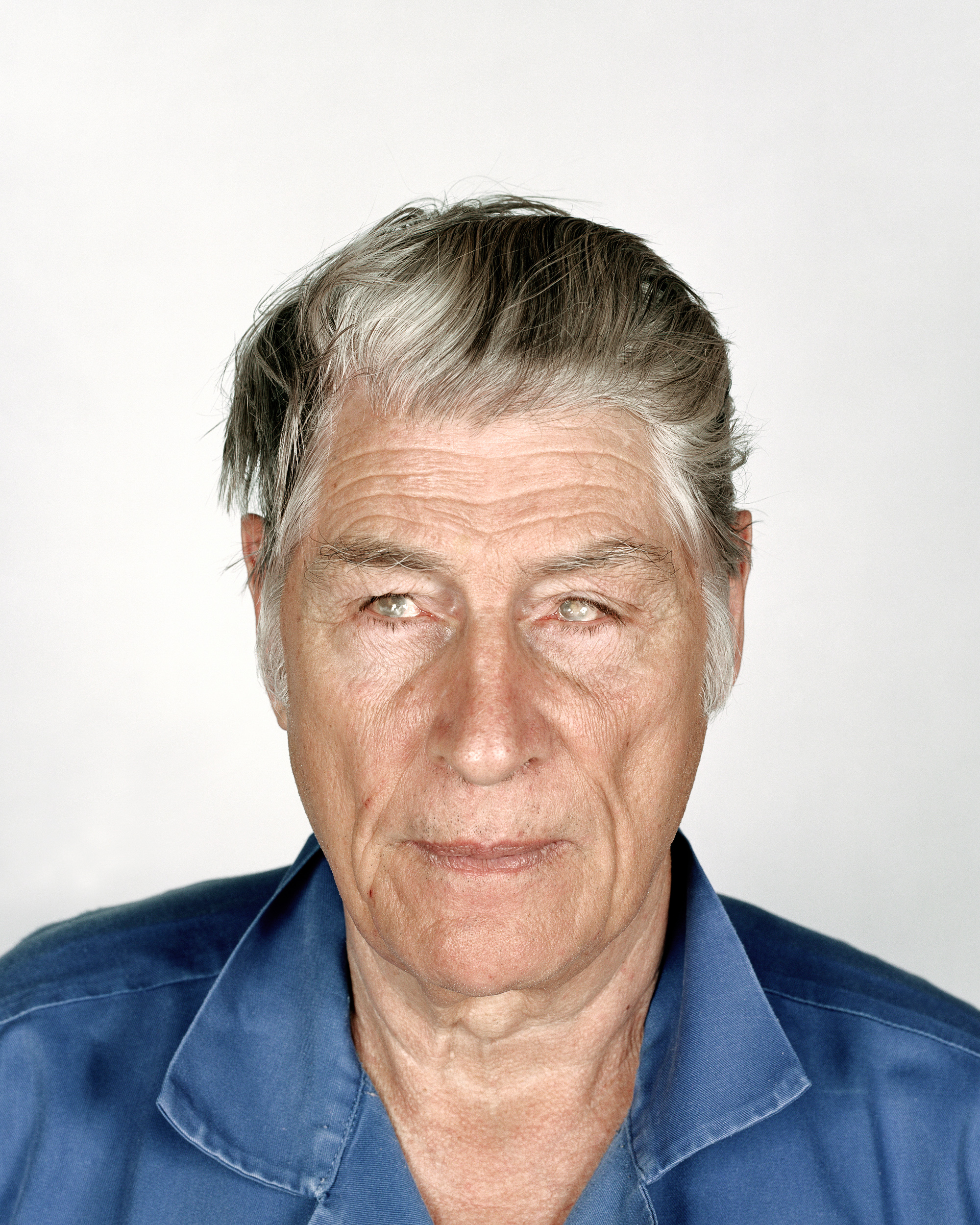
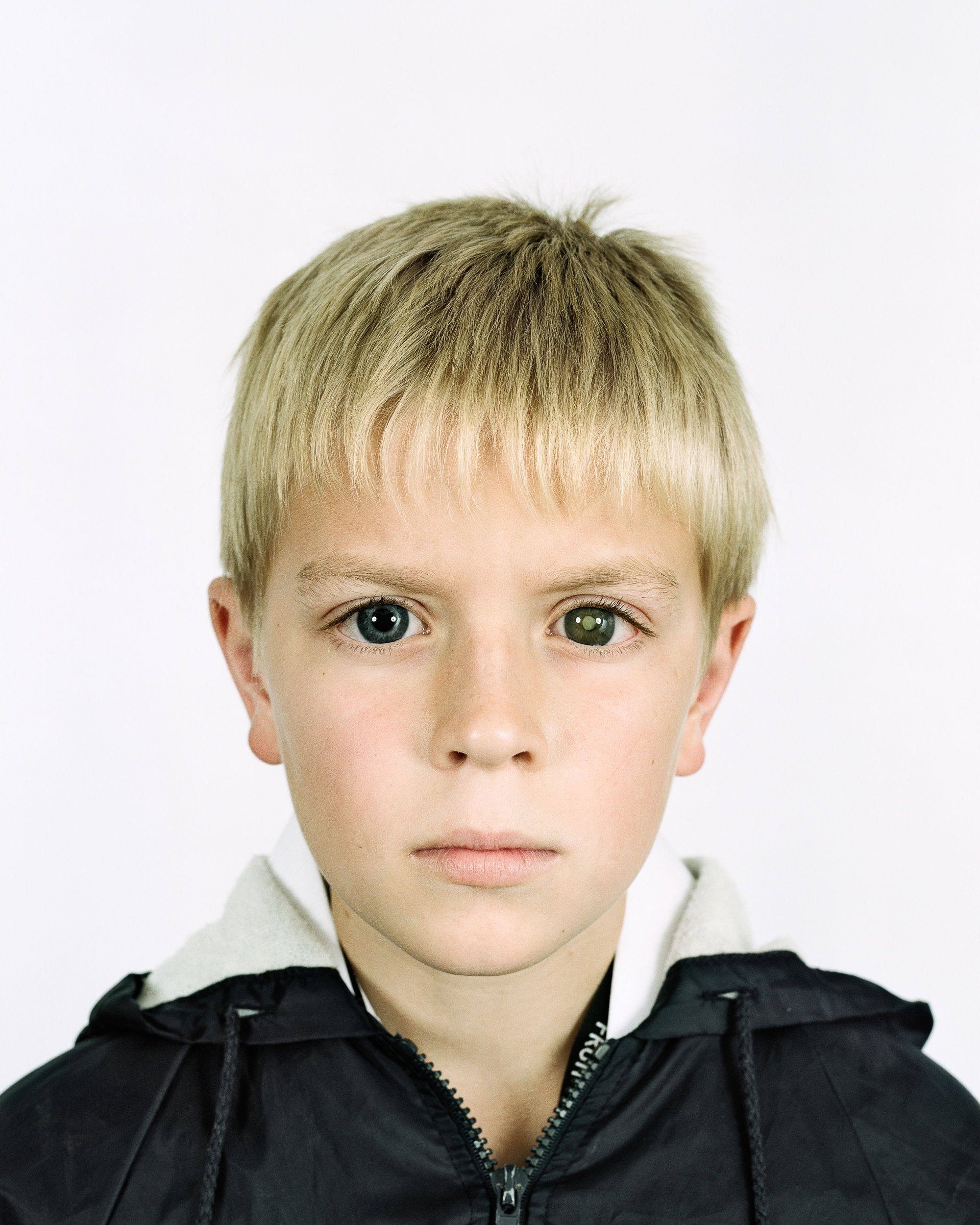
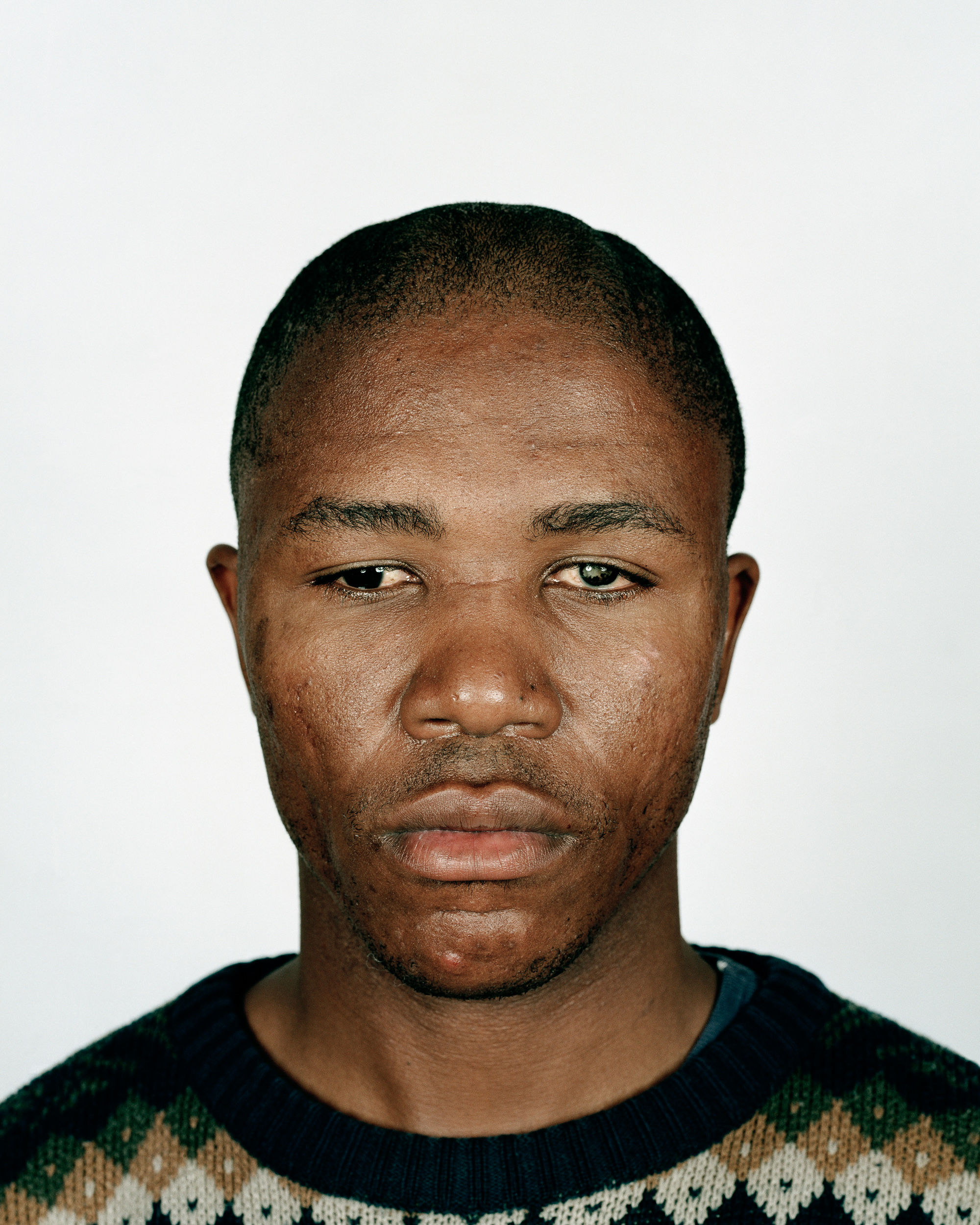
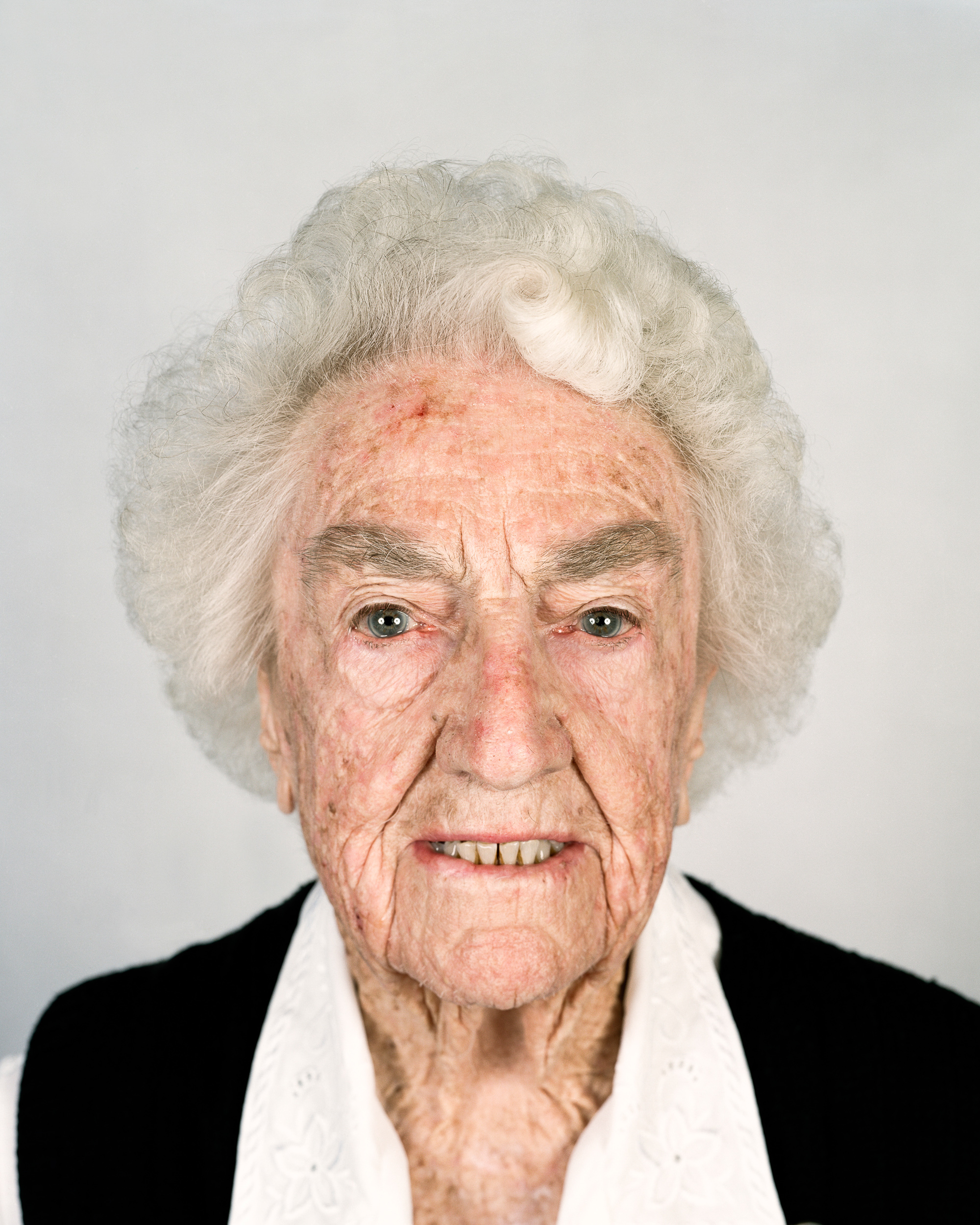
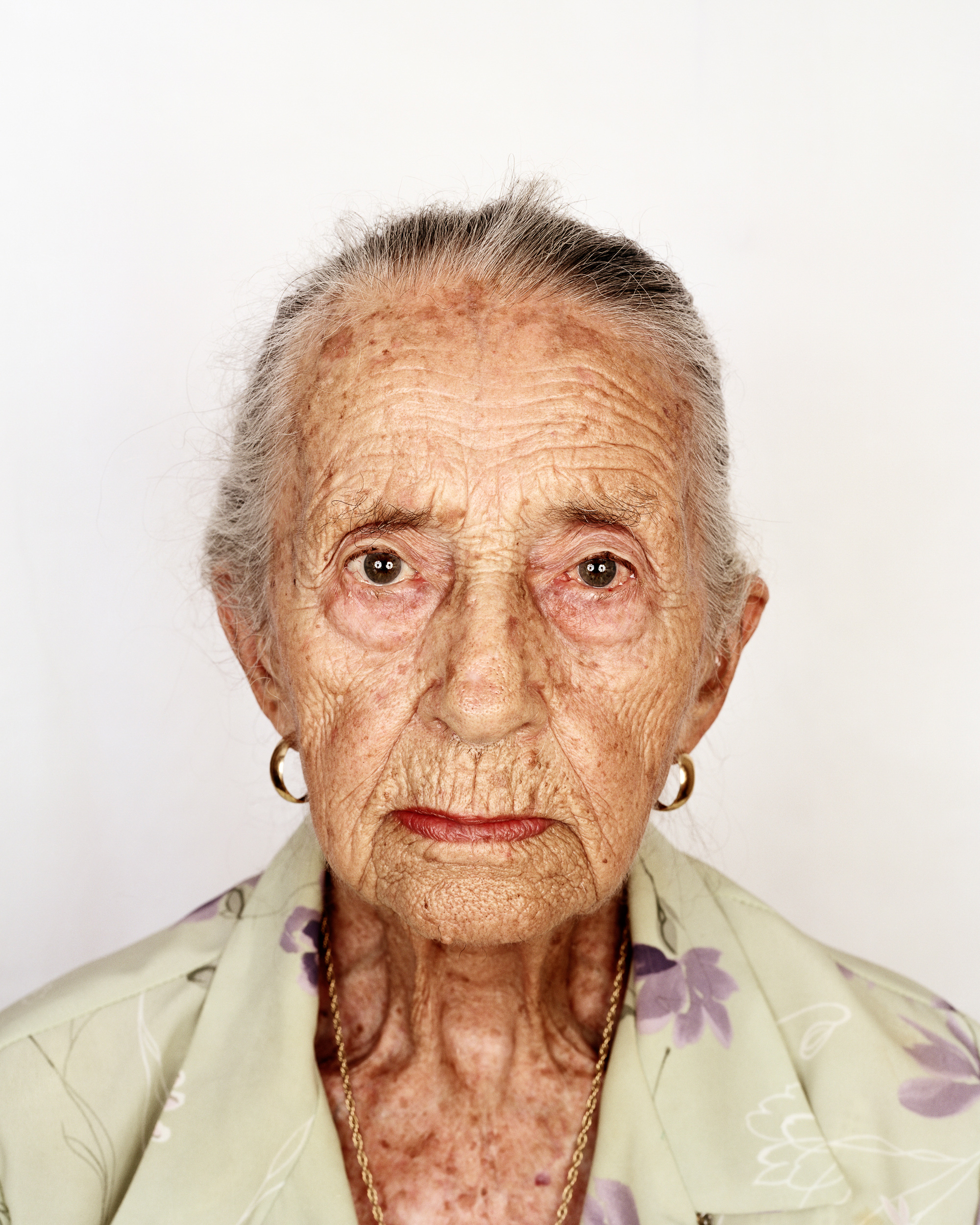
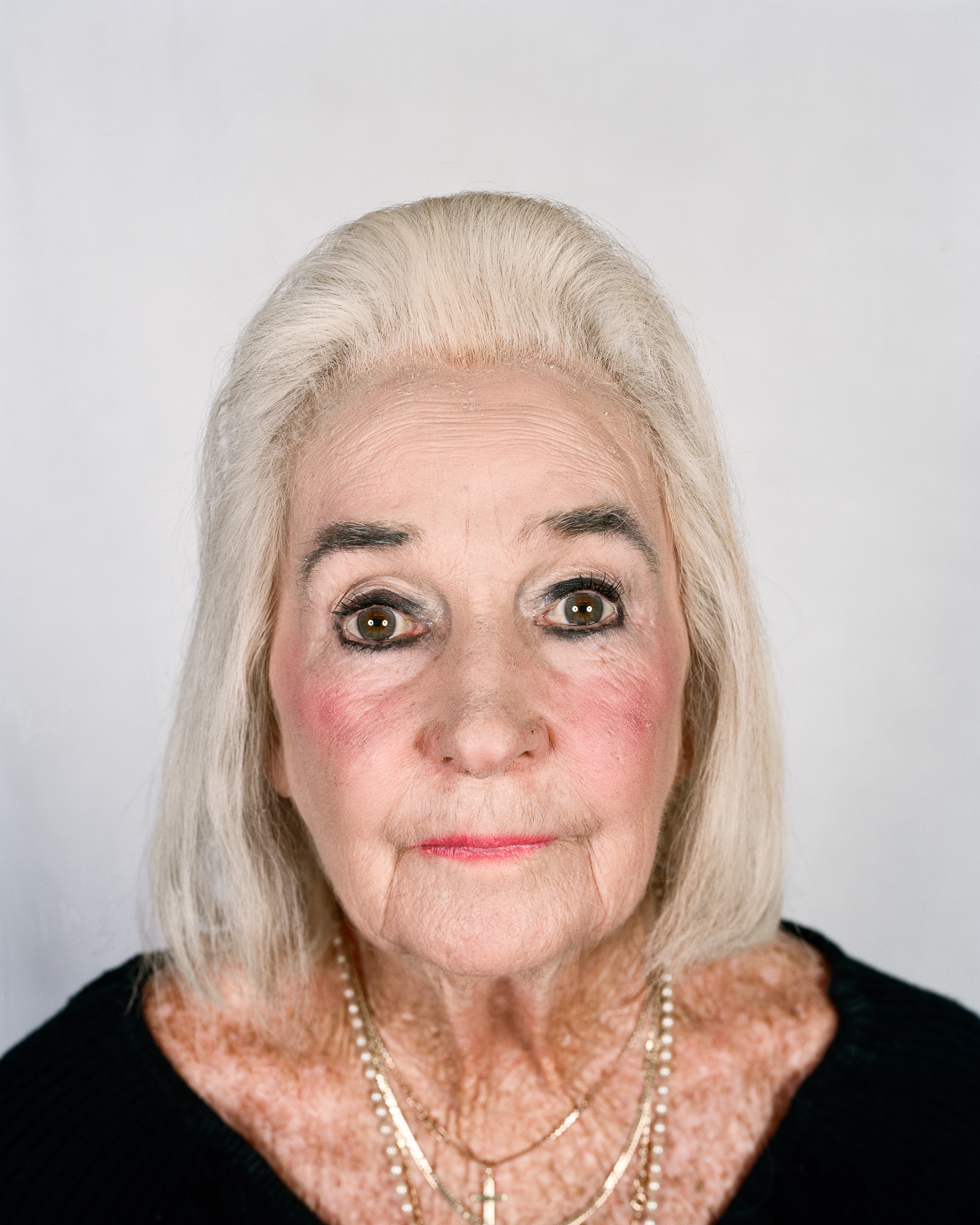
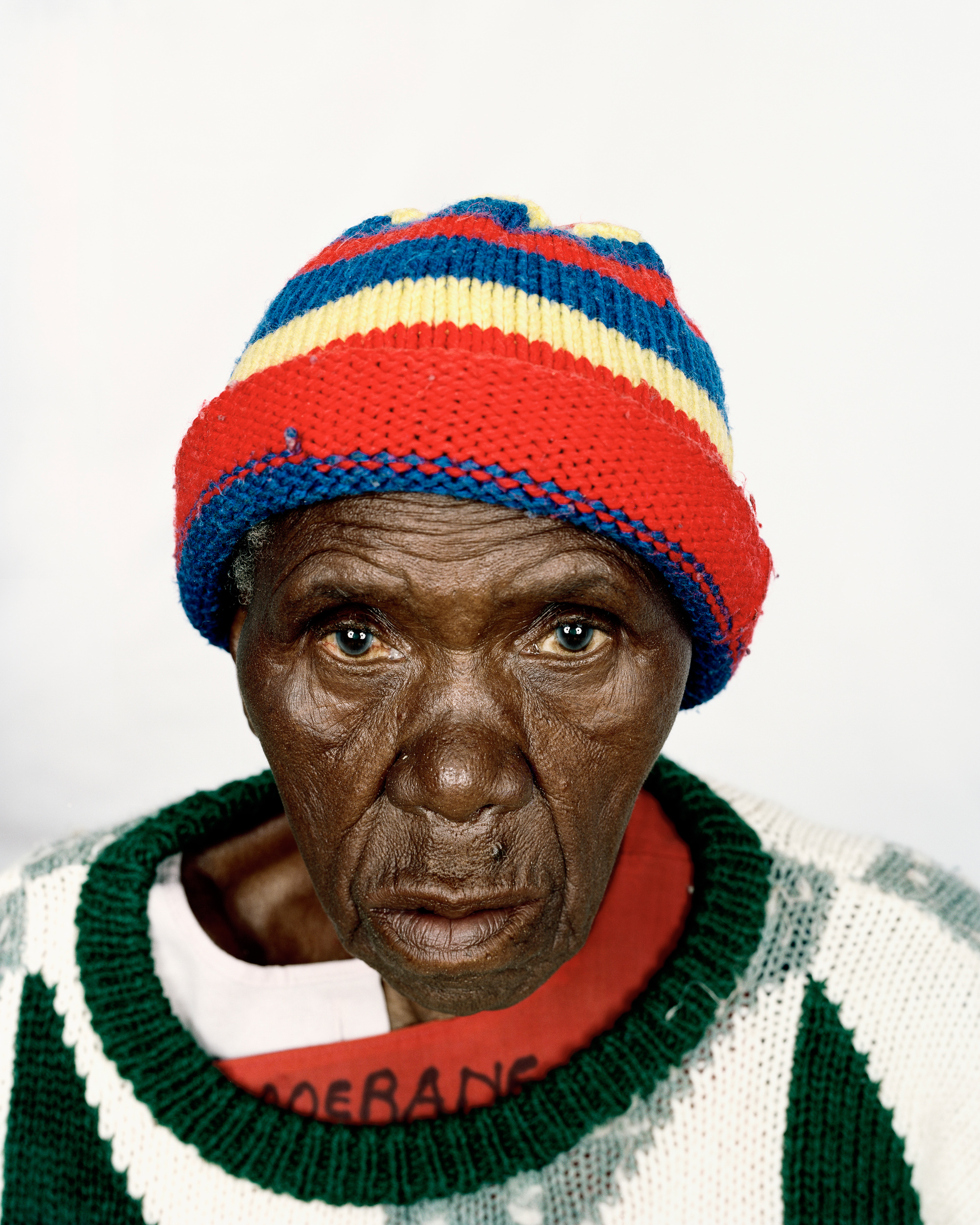
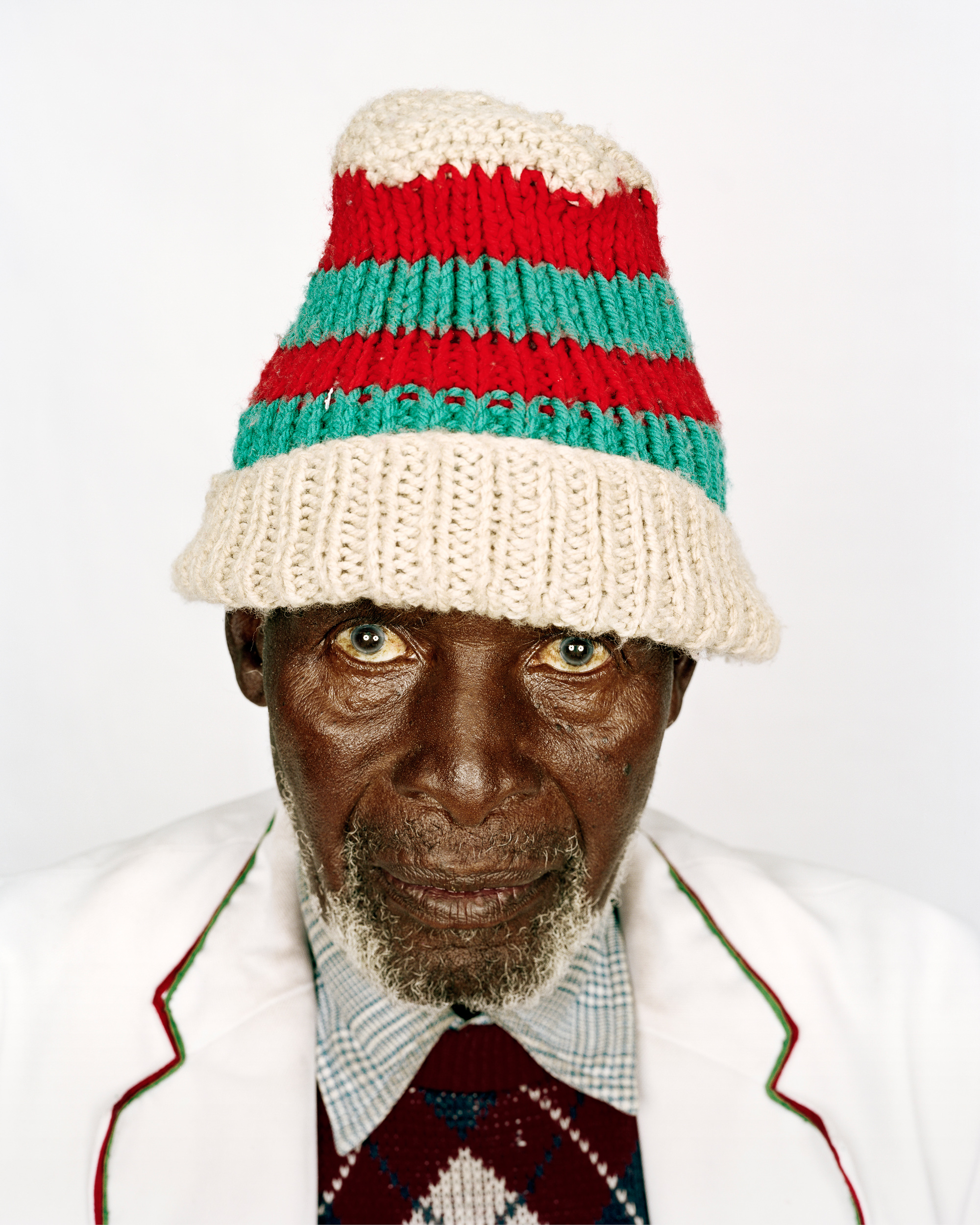
LOOKING ASIDE (2004-2005)
In the early 2000s, while living in Italy, I started photographing people with albinism in various parts of the world. I was travelling as an assignment photographer and used the opportunity to explore my own interests while meeting professional obligations. My earliest portraits featured people naturalistically posed in ambient environments. As the project developed, I opted to narrow the focus to South Africa, as well as limit myself to producing only head-and-shoulders portraits taken with the aid of studio lights against a neutral backdrop.
A lot of the people I photographed had poor eyesight – it is one of the side effects of albinism – and worked in institutions for the visually impaired. This led me to extend the scope of my project to include people who were blind or partially sighted. The same feelings of discomfort I encountered photographing people with albinism arose when I photographed people with poor or no eyesight. The discomfort at encountering an unreciprocated gaze is, I think, self-imposed. It is not something the subjects feel.
While working on this body of work, I visited my grandmother in a frail-care centre. I recognised the same sense of discomfort around the elderly. My grandmother appears in this portrait series, as do I. It was the first of many self-portraits I have taken for display. I am both the maker and a kind of marginal protagonist in my series about marginalised people.
In this early body of work I explicitly took a confrontational stance, an attitude that is rehearsed in a lot of my subsequent work. It is an unflinching series. I want the subjects to match the intensity of my own gaze.
I have often thought about the strict frame I settled on for this portrait series. I think it was informed by two trajectories of photography that emerged from apartheid South Africa. Photojournalism set out to inform the world about conditions in the country. Stylistically, it was indebted to the humanist traditions of twentieth-century American photography. I have never been comfortable with its lyrical vocabulary. At the same time, photography was being used by the state as a tool of classification and separation. All South Africans were required to carry a photo ID. My series turns this loaded compositional style on its head to document people marginalised by the glib visual propaganda of the ‘new’, liberated South Africa.